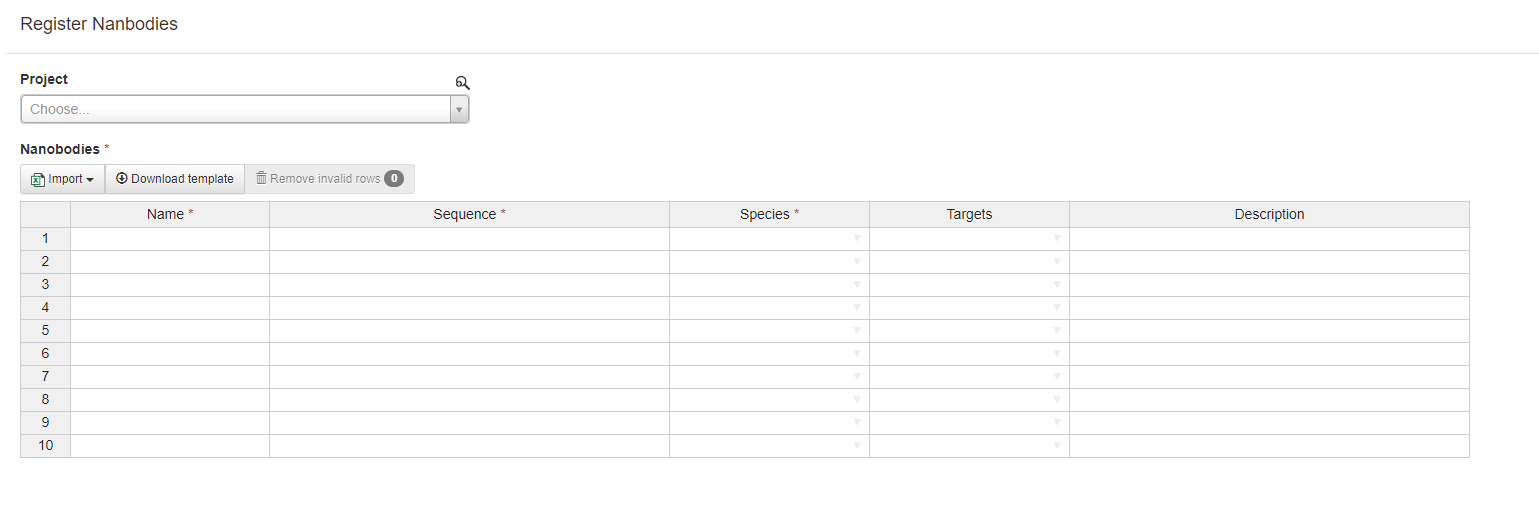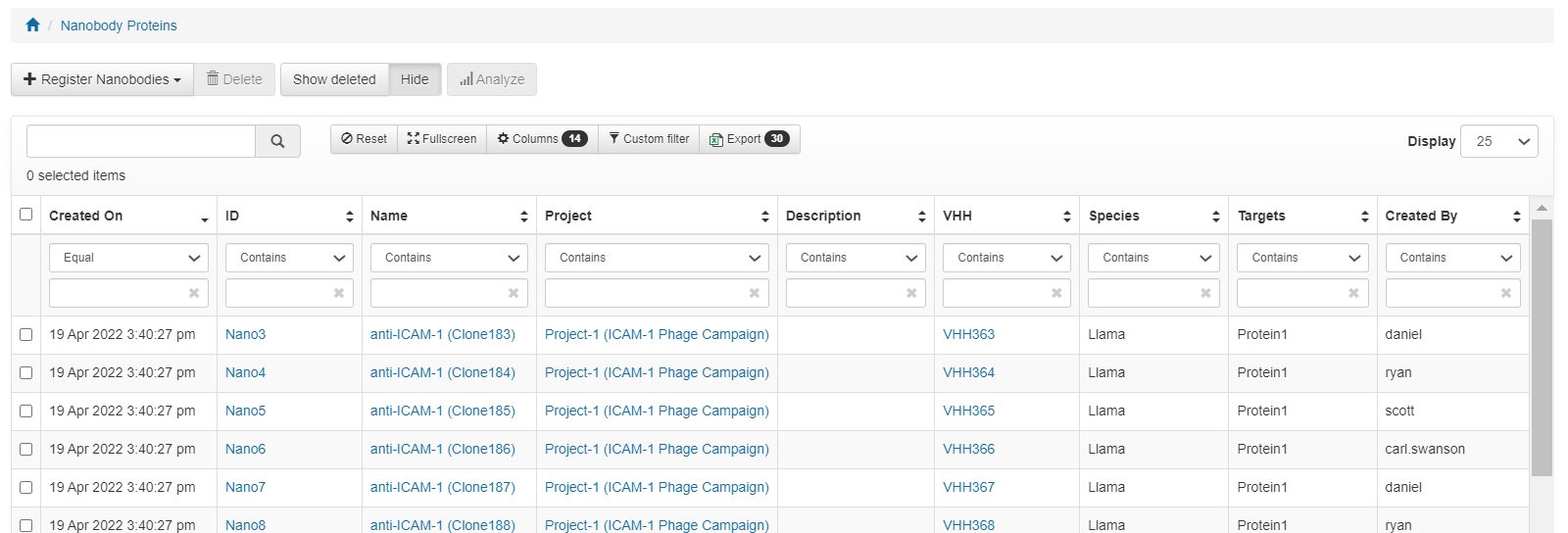Nanobodies can be registered by sequence or VHH variable region and managed within the Materials module.

To register nanobodies in Affinity, click on Register Nanobodies in the upper left of the Nanobody index page, then select from sequences or VHH Variable Regions.
When registering from sequence, users can optionally select a project, and then enter the name, sequence, and species of the nanobodies in question. Users may also optionally associate one or more targets and a description with a nanobody.

When registering from VHH Variable Regions, the form will be similar with the exception of sequence being replaced by a dropdown selector of all variable regions registered in Affinity whose type is VHH.
Nanobody Index and Details
The index page for nanobodies allow users to review the existing nanobodies registered in the system. Filters can be applied on any column to narrow the displayed nanobodies. Click on an nanobodies' ID to navigate to its details page.

The details section allows users with proper permissions to edit the name and description of a nanobody. It will also display the calculated attributes, such as Molecular Weight, Extinction Coefficient, and Isoelectric Point and all germline information used during analysis.
In the top right of the page, the user is able to tag, comment, and attach any files to the entity.
Lots of the selected nanobody are listed on the details page and the user can register new lots by clicking the Register Lots button.
Select an assay type in the Assay Results section of the details page to display all assays of that type against samples of the selected nanobody.
Beneath the Assay Results, the user can view and edit the Targets associated with this nanobody. Click Add target to select either a target or a material to be added.
Finally, the sequence details will be displayed, including the nanobodies' variable region ID, molecular weight, extinction coefficient, isoelectric point, germline analysis, VGene, DGene, JGene, any clones which use this chain, any plasmids which can be used to construct this chain, and VR Analysis. A sequence map which displays the chain’s sequence along with the annotations associated with the selected pipeline is included. Select different pipelines to view different or more than one set of annotations at a time (i.e. both Kabat and Chothia).
